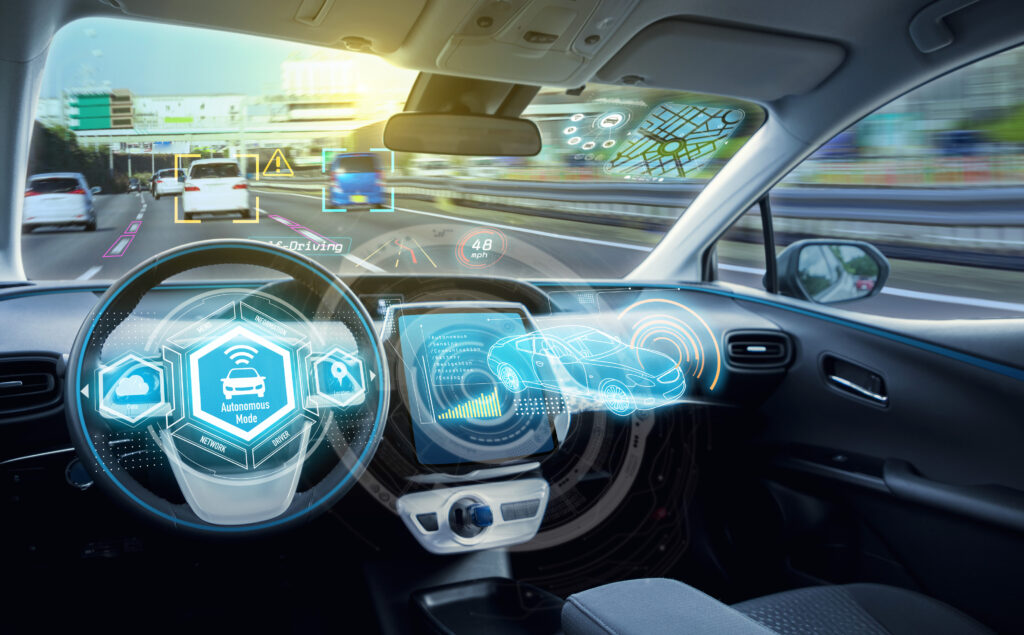The Road Ahead: Navigating the Future with Self-Driving Cars
Introduction:
The automotive industry is undergoing a revolutionary transformation with the advent of self-driving cars. Once the stuff of science fiction, autonomous vehicles are now a tangible reality, poised to reshape the way we move and interact with our urban environments. This article delves into the intricate world of self-driving cars, exploring the technology behind them, their potential impact on society, and the challenges that lie ahead.
I. The Evolution of Self-Driving Technology:
The concept of self-driving cars has been percolating for decades, but recent advancements in artificial intelligence (AI), sensor technology, and connectivity have propelled this idea from dream to reality. At the heart of autonomous vehicles is the intricate dance between hardware and software, where sensors, cameras, lidar, and radar systems collaborate with powerful AI algorithms to interpret and respond to the complexities of the road.

A. Sensory Overload:
Self-driving cars rely on a myriad of sensors to navigate the environment. Cameras capture visual information, lidar systems use laser beams to map surroundings in 3D, radar detects objects, and ultrasonic sensors provide proximity data. The fusion of these data sources creates a comprehensive understanding of the vehicle’s surroundings, allowing it to make split-second decisions.
B. Artificial Intelligence as the Brain:
The real magic happens in the onboard computers where complex AI algorithms process the vast amounts of data generated by sensors. Machine learning enables these algorithms to improve over time, learning from every situation encountered on the road. This continuous learning process is crucial for enhancing the accuracy and reliability of autonomous vehicles.
II. The Promise of Self-Driving Cars:
A. Safety First:
Proponents of self-driving cars argue that one of the primary advantages is the potential to drastically reduce road accidents. Human error, responsible for a significant portion of accidents, can be mitigated with autonomous vehicles that don’t suffer from fatigue, distraction, or impaired judgment. Furthermore, self-driving cars can communicate with each other, reducing the likelihood of collisions.
B. Increased Mobility and Accessibility:
Self-driving cars have the potential to revolutionize transportation for individuals who are unable to drive due to age, disability, or other reasons. Elderly individuals and people with disabilities may gain newfound independence, as self-driving cars provide a reliable means of transportation without relying on external assistance.
C. Traffic Optimization:
Autonomous vehicles, equipped with advanced traffic management systems, can optimize traffic flow by communicating with each other and coordinating movements. This could lead to reduced congestion, shorter commute times, and more efficient use of road infrastructure.
III. Challenges on the Horizon:
A. Technological Hurdles:
While the promise of self-driving cars is enticing, there are significant technological challenges that must be overcome. Adverse weather conditions, unclear road markings, and unpredictable human behavior present formidable obstacles for current autonomous systems. Developing robust algorithms that can handle these challenges remains a critical area of research.
B. Ethical Dilemmas:
The introduction of self-driving cars raises ethical questions that extend beyond the realm of technology. How should autonomous vehicles prioritize the safety of occupants versus pedestrians in emergency situations? Addressing these ethical dilemmas requires careful consideration and consensus within society.
C. Regulatory Framework:
The legal and regulatory landscape surrounding self-driving cars is still evolving. Establishing a comprehensive framework that ensures the safety and ethical operation of autonomous vehicles is a complex task. Governments around the world are grappling with the need to balance innovation with public safety.
IV. The Roadmap to Adoption:
A. Incremental Implementation:
The widespread adoption of self-driving cars is likely to occur incrementally. Many automakers are already incorporating semi-autonomous features, such as adaptive cruise control and lane-keeping assistance, into their vehicles. This gradual approach allows both technology and society to adapt to the increasing autonomy of vehicles.
B. Public Perception and Acceptance:
Acceptance of self-driving cars among the general public remains a crucial factor in their widespread adoption. Building trust through transparent communication about the technology, its capabilities, and its limitations is essential. Demonstrating the safety benefits and addressing concerns about job displacement in the transportation sector are key aspects of garnering public support.
V. Future Implications:
A. Urban Planning and Infrastructure:
The rise of self-driving cars will inevitably impact urban planning and infrastructure. Cities may need to redesign roads and parking facilities to accommodate autonomous vehicles. The need for extensive charging or refueling infrastructure for electric autonomous cars also poses challenges and opportunities for city planners.
B. Economic Shifts:
The widespread adoption of self-driving cars could have far-reaching economic consequences. Industries related to transportation, such as trucking and delivery services, may undergo significant transformations. New job opportunities may arise in areas such as vehicle maintenance, software development, and data analysis.
Conclusion:
Self-driving cars represent a paradigm shift in the way we think about transportation. The technology behind autonomous vehicles has come a long way, offering the promise of increased safety, accessibility, and efficiency on our roads. However, the journey to fully autonomous vehicles is not without its challenges. Technological hurdles, ethical considerations, and regulatory frameworks must be addressed for self-driving cars to become a ubiquitous reality. As we navigate the road ahead, the evolution of self-driving technology will undoubtedly shape the future of transportation and redefine our relationship with the vehicles that carry us into the next era.